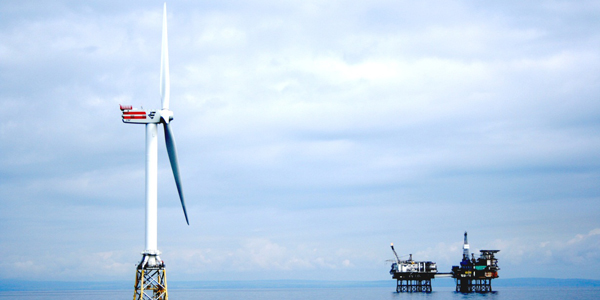A new report released by North Carolina Department of Commerce maps out how the state can tap into its offshore wind potential to become a manufacturing and workforce hub for development in the Southeast.
Authored by industry consultants BVG Associates, the report predicts that the U.S. will see 41 GW of OSW — with a $100 billion supply chain — by 2035, and that North Carolina’s strong manufacturing sector with its 470,000 workers could supply major components and materials to fuel that market growth. The state already has one of the largest manufacturing sectors on the East Coast, with $91 billion in real value added to the state’s GDP in 2019, representing 17.2%, according to the report.
Globally, the OSW market has grown on average 24% each year since 2013. “The larger this market becomes, the more the supply chain will be established on the East Coast,” the report says.
The report highlights a building momentum to “accelerate the offshore wind opportunity by driving North Carolina’s offshore wind targets and new wind farm developments to match the significant electricity consumption of the Southeast and Mid-Atlantic states [and] maximize economic, decarbonization and environmental benefit.”
Agreements with neighboring states could be leveraged to create a regional supply chain network, the report says, to promote the Southeast as a hub for OSW developers and suppliers. The groundwork for such multistate initiatives was laid in October 2020, when the governors of North Carolina, Maryland and Virginia signed a memorandum of understanding committing each state to develop at least 6.8 GW of OSW capacity. The MOU encourages the three states to align their individual regulatory requirements to support more production and optimize regional assets and resources.
“Offshore wind development, combined with our strong solar capacity, will bring more high paying, clean energy jobs to North Carolina while we continue to ramp up our fight against climate change,” Gov. Roy Cooper said in a statement about the MOU. “This bipartisan agreement with neighboring states allows us to leverage our combined economic power and ideas to achieve cost-effective success.”
North Carolina’s other climate policies also encourage growth in OSW, according to the BVG report. The state’s Clean Energy Plan aims to reduce greenhouse gas emissions in the state’s electric power sector 70% below 2005 levels by 2030 and reach net zero by 2050.
As the largest utility in the state, Duke Energy could be key to boosting OSW generation, the report said. Duke has pledged to reach net-zero emissions by 2050, but it currently has no OSW projects in development. The utility’s Integrated Resource Plan, submitted in September 2020, lays out six pathways to achieving that goal, although it is not clear that all pathways would succeed. Two of the pathways rely on significant offshore wind development, with no new natural gas generation.
The IRP is currently under review and is scheduled for a hearing with the North Carolina Utilities Commission on March 16. Duke participated in a commission technical conference focused on integrated resource planning on Tuesday, during which it made no mention of planning for future OSW development and downplayed the near-term need for energy storage and distributed energy resources.
The only OSW project moving forward in the state is Kitty Hawk Offshore, owned by Avangrid Renewables. Construction of the first phase could start in 2024 and will have the capacity to generate approximately 800 MW of electricity. The full project will have a generation capacity of 2,500 MW, or enough to power 700,000 homes. Over the next decade, it is projected to create almost $2 billion in total economic impact for Virginia and North Carolina, according to an economic impact report.



